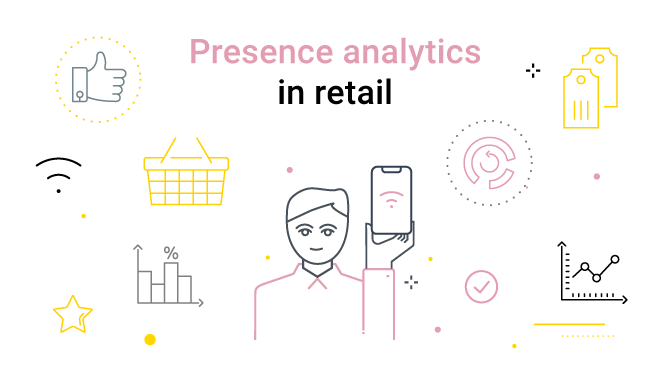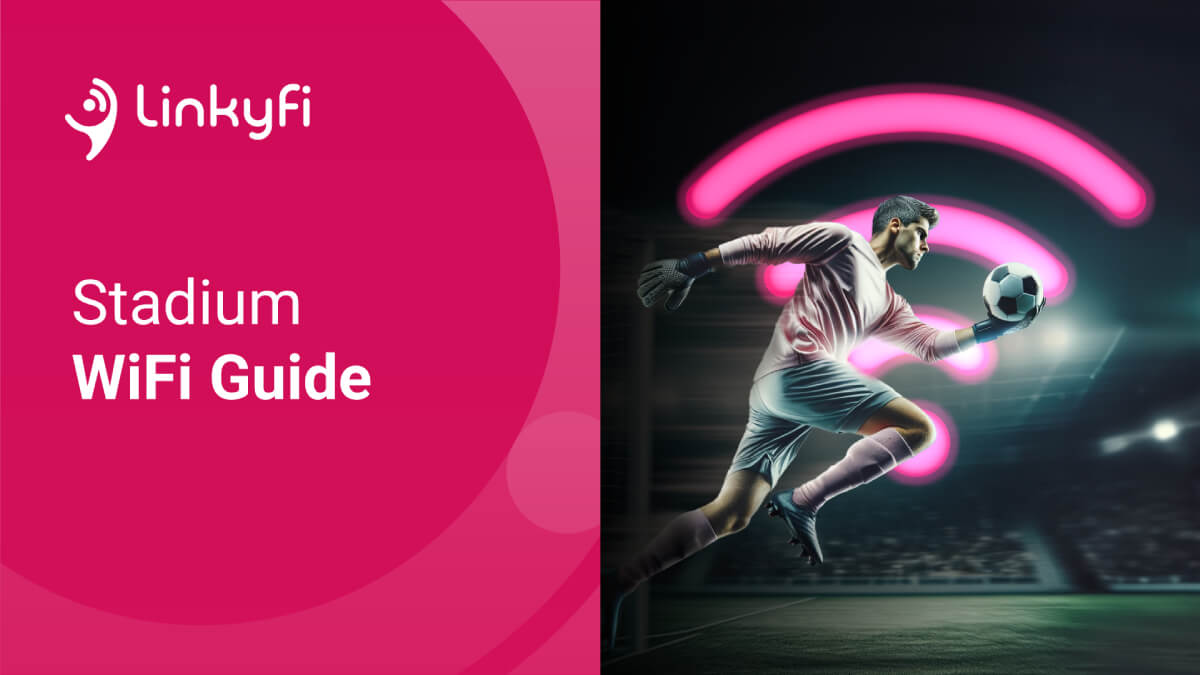Why do you need WiFi presence analytics in retail?

“Presence analytics” may seem like a marketing hoax for yet another tool that retailers don’t need. As it turns out, tracking presence may be one of the key performance indicators (KPI) that can materially change the business for the better. From improving customer service and experience, through optimizing layout and processes, to increasing revenue – when used right, presence analytics in retail can support all that.
What are presence analytics?
Very generally speaking, presence analytics are sets of data about visitors that include information such as the number of customers and their length of stay, the number of returning visitors or passers-by, or busiest visiting hours.
There are different technologies that allow retailers to obtain this data. One of the easiest and most cost-effective is using existing WiFi infrastructure. In this solution, software collects information about devices that probe for WiFi access, for example smartphones or tablets. The visitor doesn’t have to actually try to connect to the network; having a WiFi-equipped device is enough for the software to gather anonymous data about the device (its MAC number).
Premium solutions also include WiFi location analytics which in turn provide more precise behavioral information, such as customers’ movement paths and flows, as well as congestion points and most popular areas in the venue. They do so by not only storing the MAC number of a device, but also tracing it around the venue.
Why does retail need presence analytics?
There are numerous benefits to tracking presence analytics in retail. They provide the most precise information about retailers’ customer base and its behavior. This gives retailers invaluable insights that can quickly be turned into better planning, more optimized processes, and bigger profit.

Obtaining customer data
While presence analytics themselves can’t provide retailers with customers’ personal data, they do ensure robust figures that can help them better understand their customer profile. This includes information on who’s a shopper and who’s just a passer-by, how frequently they return to the venue and how long they stay there. Presence analytics simultaneously provide retailers with simple and useful people counting software that they can use to measure the overall popularity of their stores, occupancy and peak hours.
Discovering shopping paths
On top of that information, with premium solutions for WiFi presence analytics that record not only raw data about the customers, but also their activity, retailers can also discover customers’ shopping paths. By tracking device movements, platforms that offer WiFi-based location services can create customer flows that show directly how customers move around the venue and in what order they visit particular areas. They also allow retailers to easily visualize congestion points and hotspots on heatmaps. This gives them unparalleled opportunity to adjust space, so that it is more convenient for customers and, as a result, more profitable for the business.
Better restocking
Knowing when and where customers like to go, retailers can make one more crucial adjustment: prepare for restocking better. As customers, we all hate it when the store is full of people and on top of that the alleys are blocked with pallets or cages of stock that’s being replenished. Fortunately, having the information about the footfall, retailers can both avoid restocking at peak hours and replenish the shelves before so that the customers can find everything they want and shop comfortably.

Improved resource management
The information about footfall gives retailers one more advantage: they can prepare for the peak times in advance. They can for example schedule more colleagues for shifts that regularly show increased turnover to provide regular replenishment, checkout service, as well as customer support. But WiFi presence analytics also provide retailers with real-time information about the situation in their store. This means that they can react on the go. For example, if they see a sudden rush of customers entering the store, they can reasonably expect these customers will soon want to pay, which will require opening new checkouts to avoid queues. This helps colleagues prepare and finish their other tasks before they need to attend to the customers and streamlines the process.
Comparing results
WiFi presence analytics in retail can also be used as statistical data for comparisons between venues. Perhaps a particular store has a large number of passers-by, which would suggest it is well located, but that doesn’t translate into a large number of visitors? Or maybe some stores have a lower number of returning customers than others, which affects their revenue? Presence analytics give retailers objective measures that market chains can use to evaluate store performance. By analyzing it, they can then introduce improvements in underperforming venues.
Upselling space
The data can be used not only for market chains to optimize their venues, but also for shopping malls to upsell space. Having hard numbers provided by WiFi presence analytics, owners can negotiate leases with their tenants in locations that have the highest footfall. Based on the customer flows, they can also make adjustments and offer space to particular tenants that best fit customer needs. Let’s say that our data shows that customers who visit a grocery store at the mall also tend to go to the pharmacy later – owners can then plan the layout and placement of the pharmacy in a way that best complements the grocery store.

Necessary investment
There’s ample proof that, for retail, WiFi presence analytics are a necessary investment. If anything, the recent global events that severely impacted both the economy and our daily lives have proven how useful the technology can be for social distancing and occupancy management, among other things. But analytics are also a very profitable investment, as they provide an ongoing source of data that can be used to make a business better. They can help retailers both make necessary day-to-day adjustments, as well as plan lasting improvements. Whether the material benefits are instantaneous or long-term, direct or indirect, tracking presence analytics can only help retailers.
Recommended posts
- WiFi for Stadiums Explained
- Guest WiFi - Easter Marketing with AI: A Step-by-Step Guide
- Guest WiFi + AI: Your Marketing Dream Team!
Subscribe to stay in the loop with all our latest content:
Recommended posts





